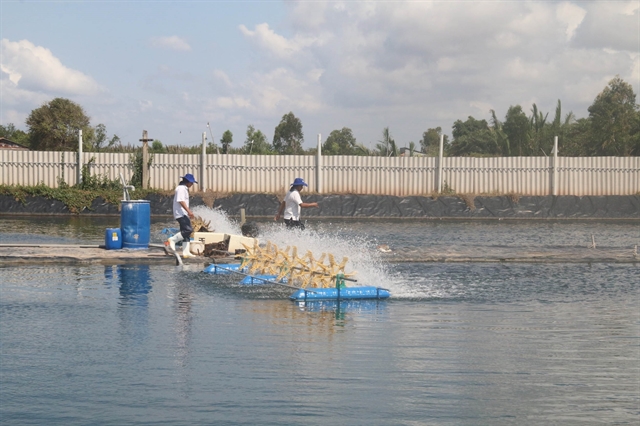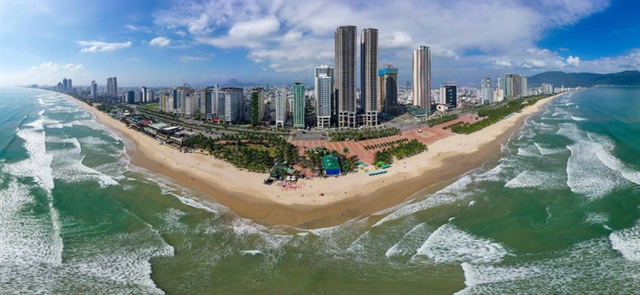 Society
Society

 |
| Intensive-farming shrimp ponds in Tiền Giang Province’s Tân Phú Đông District. — VNA/VNS Photo Minh Trí |
TIỀN GIANG — The Cửu Long (Mekong) Delta province of Tiền Giang is expanding aquaculture in coastal areas.
With its 32km coastline, three main river mouths pouring into the sea and mangrove forests, the province has an ideal environment for the reproduction of bivalve molluscs.
Its riverine islands such as Ông Mão and Ông Liễu in Gò Công Đông District and Ngang in Tân Phú Đông District are major habitats for the reproduction of clams and blood cockles.
The province’s blood cockle seeds are evaluated to have the best quality in the country and they have a high survival rate of 80 per cent.
According to Trần Ngọc Trí, director of the Phú Tân Aquaculture Co-operative in Tân Phú Đông District, the co-operative is managing 500ha of mud flats in the Ngang riverine islet, with the participation of 1,050 members.
The co-operative has harvested more than 5.2 tonnes of blood cockle seeds so far this year. The seeds are sold at a price of VNĐ1.3-1.7 million (US$55-72) a kilogramme.
The province has more than 2,300ha of clams with an annual output of 15,000-17,000 tonnes and nearly 4,000ha of shrimp with an annual output of 16,000 tonnes.
The province’s clams have high quality meat, look good and are mostly exported.
In Gò Công Đông District, farmers breed 2,200ha of clams and harvest about 20,000 tonnes a year.
The district, in co-operation with the province’s Agriculture, Forestry and Fishery Quality Management Sub-department, is applying Marine Stewardship Council (MSC) standards for Gò Công clam farming areas and aims to export the clam to high requirement markets such as the EU, the US and Japan.
The province’s coastal districts of Gò Công Đông and Tân Phú Đông are expanding shrimp farming areas as they offer high profits.
Trần Quang Thành in Gò Công Đông’s Kiểng Phước Commune has turned his unproductive 2ha rice field into breeding shrimp.
He earned a profit of VNĐ300-400 million ($12,700-17,000) a year, he said.
According to Nguyễn Văn Qúi, head of the Gò Công Đông Bureau of Agriculture and Rural Development, to assist farmers to breed shrimp, the district has focused on instructing breeding techniques and effective breeding models.
More shrimp farmers in Gò Công Đông and Tân Phú Đông have used advanced techniques such as the two-stage shrimp farming model.
The model uses multiple ponds for breeding shrimp and treating wastewater. Shrimp fry are first bred in nursery ponds for a few weeks before being transferred to main breeding ponds for intensive breeding.
The main ponds are equipped with oxygenation equipment, anti-sunlight nets and plastic sheets covering their beds.
The model offers a yield of 40-70 tonnes per hectare a crop while traditional farming methods have a yield of 15-20 tonnes per hectare a crop.
Bùi Thái Sơn, Secretary of the Tân Phú Đông District Party Committee, said the district had been investing in many irrigation works to serve aquaculture, and this helped increase shrimp farming areas.
The district’s shrimp farming areas had increased from 3,084ha in 2008 to 7,500ha now.
The province is soliciting investment in aquaculture, manufacturing seafood products and producing animal food for breeding aquatic species. — VNS

.jpg)

.jpg)
